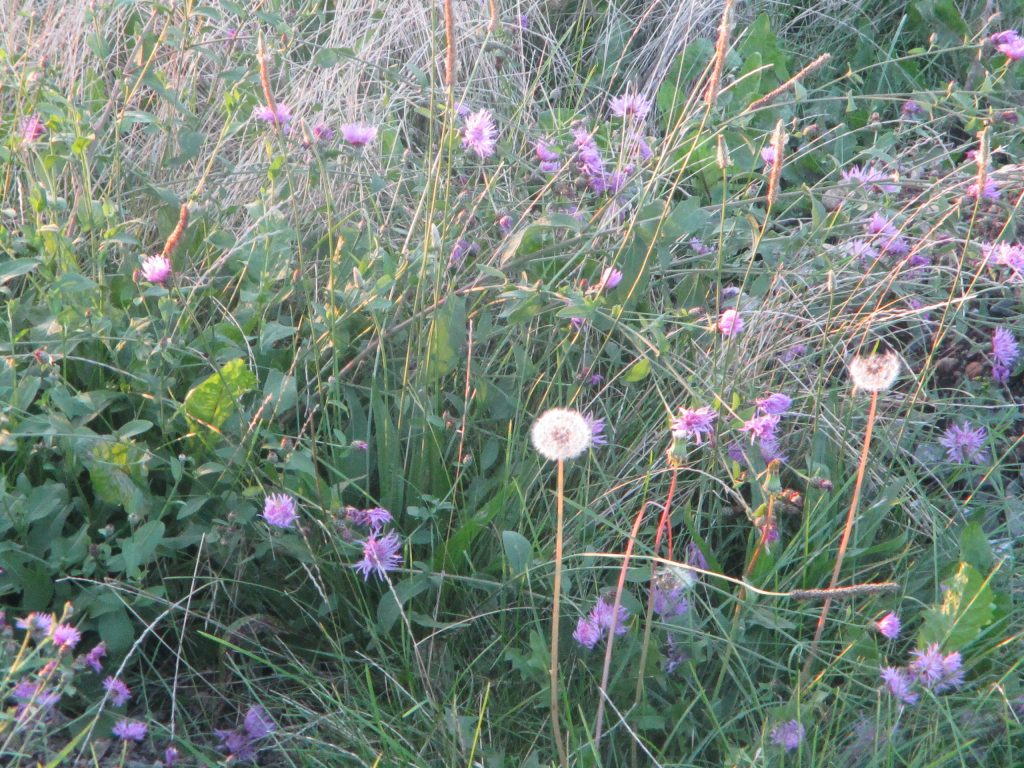
As Summer 5777 winds down, it seems to me that the time has come to express our appreciation to the
Bescheffer for those minute parts of his oh-so- intricately amazing puzzle ( the world around us)
which we gloss over as being inconsequential and meaningless—but which have an identity and a
chashivus uniquely their own!
OK, so what is that scary-looking object (in the first photo) you’re
observing in my column this week?
Well, that’s your first mistake. It didn’t enter the stratosphere from
outer space—and it won‘t attack you—although it might attack your lawn.
It’s the “seedball” of the common dandelion, Taraxacum officinale to all
you botanists in my readership.
Now you’re going to tell me that you can live without weeds—that they
spoil the pristine beauty of our Marine Park lawns. You might even tell me
that you are allergic to the latex contained in the leaves and stems of
dandelions. And you know what? I might have been tempted to agree, were it
not for what I happen to know about dandelions—I, who never once have
even sampled dandelion wine!
That’s right: You can make a “wine” from dandelion flowers.
Apparently, bees must already have figured this one out, since dandelion
nectar is used in the apian (come on now, look it up!) manufacture of honey.
But there’s a good deal more we can say about this so-called “garden pest.”
Loaded with vitamins A and C, the leaves and flowers are—guess
what!—actually good for you. In fact, one of the first “salads” I ever learned
about (as an amateur naturalist) was the exceedingly healthful dandelion
salad—although you do have to be careful about washing the leaves to remove
herbicides (including residual dandelion killer, vos noch?) and about checking
for tola’im and other halachically “foreign protein.” The leaves and roots are
reputed to have “a large number of anti-inflammatory compounds” (aspirin
users, sit up and take notice!). “Fresh-root tea traditionally [is] used for liver,
gallbladder, kidney, and bladder ailments . . . . Dandelion leaf [is] approved in
Germany for treatment of loss of appetite and dyspepsia [poor digestion] with
a feeling of fullness and flatulence. The root is approved for treatment of bile
flow disturbances, as a diuretic [like a water pill], to stimulate appetite, and to
treat dyspepsia.”1
Now you’re probably going to exclaim, “Hey, what a medicine! Where
can I buy myself some—and for how much?”2
The answer: It’s free and grows like a weed. Indeed, some benighted
people actually think it is a weed. Can you imagine that?
But by now you know better—and precisely what vast benefits our
humble little dandelion conveys! And undoubtedly you admire the Divinely
orchestrated artistry underlying that perfect globe, that striking sphere,
comprised of aerodynamic seedlings which ensure Taraxacum officinale’s
continued existence.
And now you also understand much better Ben Azzai’s statement:
“V’al taflig bechol davar: And don’t underrate [distance yourself from]
anything! [Pirkei Avos 4:3].3 ”
For if as Rabbi Masya ben Chorosh tells us, “Vehehvei zanav lo’arayos:
And be a tail to lions” (Avos 4:15), then how about being a “tooth of the
lion,”4 a dent de lion in Old French—a dandelion?
1. Quotations have been taken from Steven Foster and James A. Duke, A Field Guide to Medicinal Plants and Herbs of
Eastern and Central North America, Second Edition, (Boston: Houghton Mifflin, 2000), p. 145.
2. Please remember that you must always consult a qualified, competent physician before taking any medicine—and
that goes for herbs, even common dandelions, as well!
3. To some degree I’m basing this translation on the thrust of the Tiferes Yisroel (os 19) who says: “Even something
contemptible and hateful which causes discomfort, like flies and mosquitoes, snakes and scorpions—don’t reject them
out of hand as not being necessary for the world. For it is enough for you to know that Hashem created them—and
only for the good of the world were they created.” See his remarkable comment further on (os 21).
4. If you look at the jagged leaves of a dandelion, perhaps you can understand where it got its name!
Questions or comments? You may send these to me at
hillyarm@yeshivanet.com. Kesivah v’chasimah tovah, dear readers!
You must be logged in to post a comment.